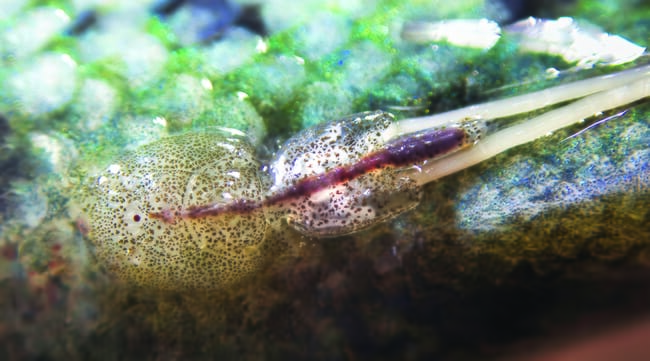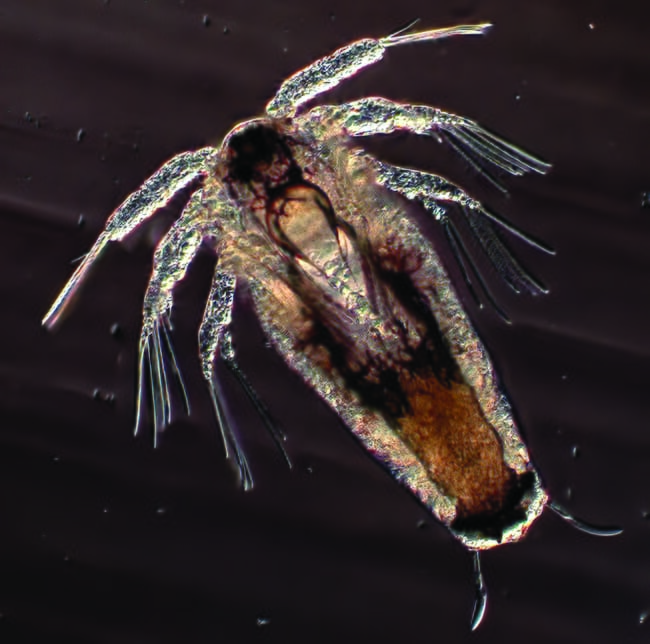
Controlling sea lice levels is difficult because larvae can travel on ocean currents and infect farms across a wide geography.
Sea lice are a key pain point in the salmon industry. Infestations on salmon farms cause a myriad of health and welfare issues and can lead to staggering economic losses for aquaculture producers. There are a number of species of sea lice that affect the salmon industry throughout the world. In Europe, Lepeophtheirus salmonis is of concern, Caligus elongatus is a key lice species in the North Atlantic, C clemensi is the main salmon parasite in Canada’s Pacific Ocean region and C rogercresseyi is the dominant louse species in Chile. These parasites can keep farms from reaching their optimum production capacity and are preventing the wider industry from achieving its full potential.
Controlling sea lice is complicated the species’ planktonic larval stages. This stage lasts several days, allowing the lice to spread over considerable distances on ocean currents.
Researchers from Marine Scotland Science, Inland Fisheries Ireland, the Institute of Marine Research, the Scottish Association of Marine Science, the National University of Ireland and Fisheries and Oceans Canada are proposing a standardised model for studying sea lice biology that accounts for particle hydrodynamics.
To do this, the researchers opted to use particles that behaved like lice eggs and larvae when suspended in water. This allowed them to track how simulated lice eggs would travel on ocean currents and see how they would behave in different hydrodynamic conditions.

Standardising sea lice research methods would mean that study results from different research organisations can be directly comparable, ensuring that any differences observed can be attributed to farming conditions.
Why opt for a standardised model?
Different research institutions have developed study models that are being used across the industry. These models encounter many challenges, especially when trying to study sea lice in Northwestern Europe. Despite these challenges, the factors that facilitate the spread of sea lice and the current study methods are similar across the world’s different salmon farming regions. In this case, the researchers are calling for full standardisation of study methods unless there are strong reasons to use area- or topic-specific models. They stress that the standards can be flexible – accounting for factors like local water temperatures or other features.
Standardisation would mean that study results from different research organisations can be directly comparable, ensuring that any differences observed can be attributed to farming systems instead of the modelling approach. Creating an accepted standard would also mean that researchers that model sea lice in a specific area don’t have to justify their individual study approaches to sea lice biology. Standardisation would also impact the validation of field models. As it stands now, field work is costly and time consuming – creating an accepted standard allows researchers to use a single model instead of validating each individual step in their study process.
Creating the hydrodynamic and biological model
Hydrodynamic models can give insights into currents that carry sea lice and provide real-time data on sea lice behaviour in the aquatic environment. To make the most of the tech, the researchers recommend creating time-scale models that can generate data with at hourly intervals. They also suggest accounting for methods that simulate particle transport on ocean currents and with changing winds.
The hydrodynamic model will yield insights on particle motion, but researchers will also need to create a biological model of sea lice particles that accounts for the full life cycle of sea lice. This includes egg production, maturation and mortality. Researchers will also need to model the way sea lice move in the water column – especially vertical movement and boundary breaking.
“Standard models based on a generic framework can be used to compare the pressure distributions of sea lice infection in different systems with different environments, different production levels and different farm layouts,” the researchers say.
The proposed models could be used to assess the impacts of new farms. They could also be used to understand the impacts of closing existing farms, or changes in production levels on salmon farms.
The researchers conclude that a standardised model framework will help jumpstart best management practices for controlling sea lice. It also has the potential to influence a range of production strategies in the salmon industry – allowing the sector to work to reduce sea lice levels and their negative impacts.




